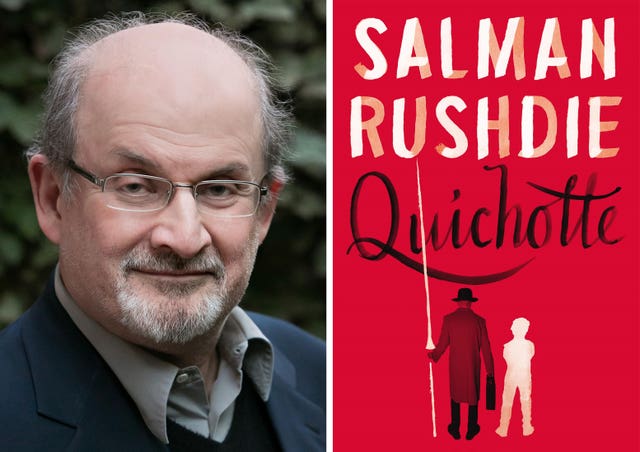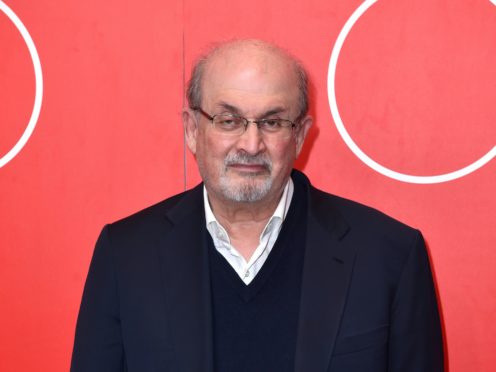Sir Salman Rushdie has said watching hours of reality TV to inform his book Quichotte was a “very odd kind of fun”.
The author, 73, watched programmes about dating and finding true love to inform a character in the novel, which was inspired by the Miguel de Cervantes classic Don Quixote.
Satirical Quichotte (pronounced key-shot) tells the story of author Sam DuChamp who creates the character Ismail Smile, a salesman, for a book he is writing.

Smile, who has the pen name Quichotte, is obsessed with reality TV and falls in love with a TV star named Salma R, leading him to travel across America with the hope of meeting her.
Sir Salman, who lived under a fatwa following the publication of The Satanic Verses, told the PA news agency: “Reality television is not my field normally, but when I was thinking about Cervantes and Don Quixote – you know what he was doing was to satirise what he thought was the junk culture of his time, which was this highly ornate, romanticised fiction about knights in armour and damsels in distress and so on, and he thought that was crap.
“And so he invented an absurd knight in armour and a damsel who wasn’t really in distress in order to send up that whole world.
“And I thought well, if he were around today, what would he point his lance at, what would he aim at, and what is the equivalent junk culture of our time? I thought well in the end reality TV is about as close to it as you can get, that whole world of Kardashians and Bachelorettes.”
And now here’s my first copy of the UK edition! (This cover will also be used in India.) pic.twitter.com/GKggECl8hK
— Salman Rushdie (@SalmanRushdie) August 2, 2019
Dating shows The Bachelor and Bachelorette, which air in the US and have been formatted in the UK, see a pool of attractive young singletons compete for the affections of an eligible Bachelor or Bachelorette.
The British author explained: “I thought if I’m going to talk about a character whose mind is absolutely full of this stuff, then I have to be able to fill his mind up, I have to know enough about it and so I had to start watching it.
“I mostly watched the romantic programmes because after all what he’s doing is falling in love, so to speak, with this star on TV so I thought appropriate programmes to think about would be the ones on TV where people try and find true love through a form of competition.
“And so I watched those – Bachelors and Bachelorettes and things like that. I won’t say it wasn’t fun but it was a very odd kind of fun and I’m glad that I don’t have to do it any more. But I did do my research”.
Sir Salman also said that in the book, which was shortlisted for the 2019 Booker Prize and is now available in paperback, DuChamp is a spy novelist because it is a genre he has always wanted to write himself.
He explained: “I always wanted to write a spy novel. I’ve had a kind of itch to write a spy novel for a very, very long time, and then I thought well other people do it better.
“I shouldn’t try and trespass on John le Carre’s turf. But you know there was a period in my life when I met a lot of spies and so I know quite lot about that secret world and that increased my desire to write about it and this is as close to writing about it as I’ll ever get.”
He also spoke about having had the coronavirus, saying: “I actually had the virus, I was ill. I got it quite early in the middle of March, and I was lucky in that I didn’t get the worst form of it so I was never in hospital, but I had it for two weeks…”.
The paperback edition of Quichotte is out now.
